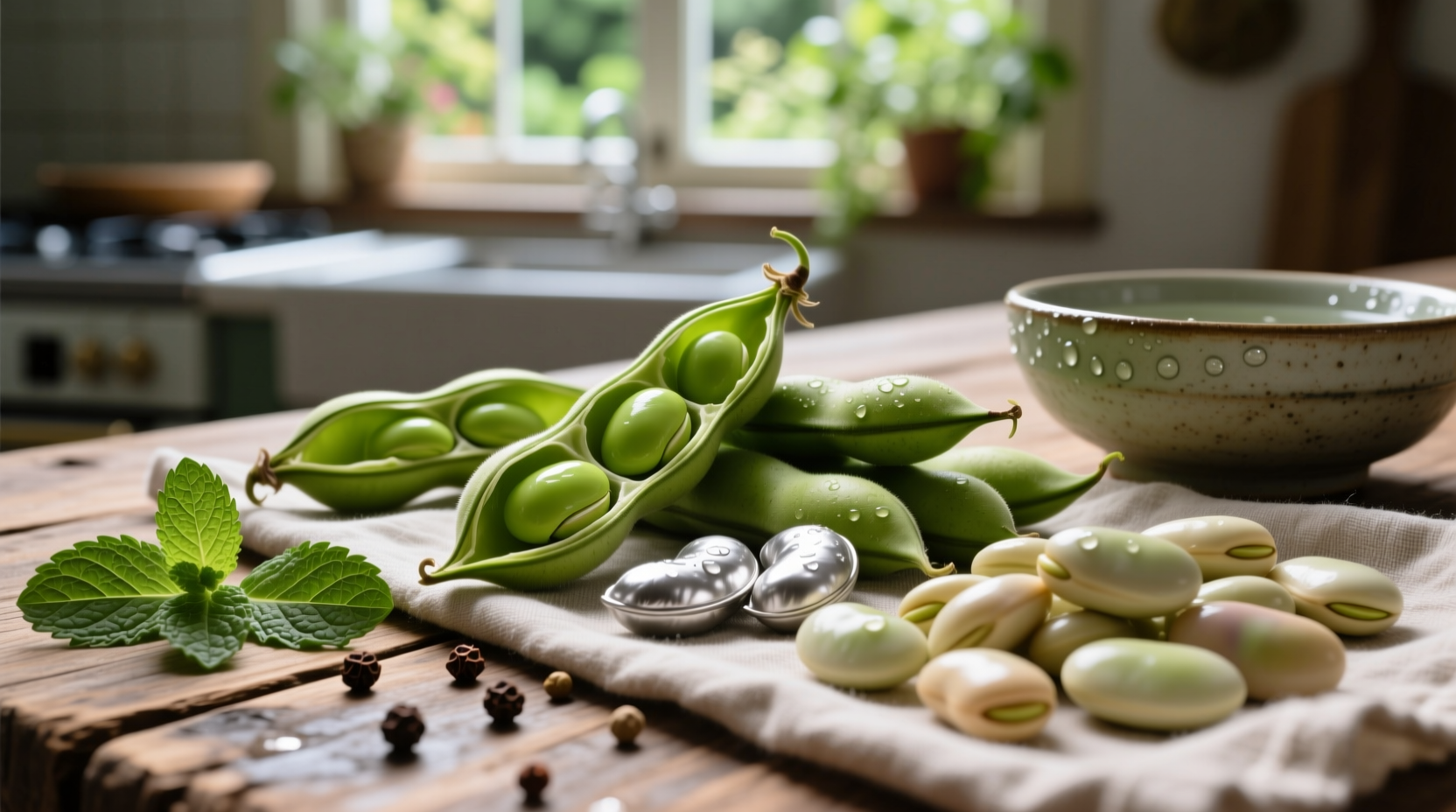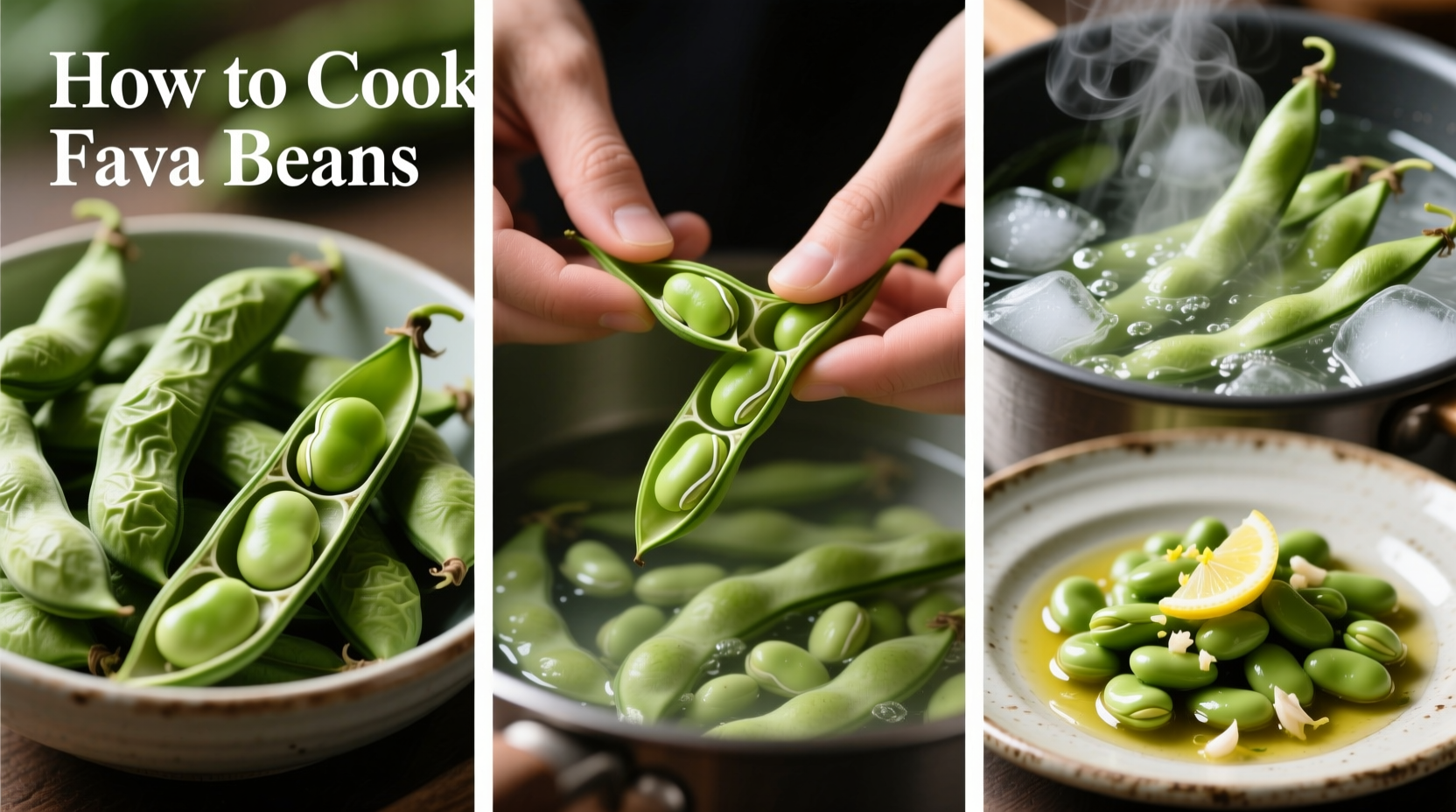Nothing compares to the fresh, buttery taste of properly cooked fava beans. Often overlooked in Western kitchens but cherished in Mediterranean and Middle Eastern cuisines, these vibrant green legumes offer exceptional nutrition and versatility. Whether you're working with fresh spring favas or dried varieties, this comprehensive guide delivers everything you need for perfect results every time.
Understanding Fava Beans: Selection and Preparation
Fava beans, also known as broad beans, come in two primary forms: fresh (in-season spring variety) and dried (available year-round). Fresh favas require more preparation but deliver superior flavor and texture.
| Type | Best Season | Preparation Time | Yield (1 lb) |
|---|---|---|---|
| Fresh in pods | March-May | 25-30 minutes | 1 cup shelled |
| Dried beans | Year-round | 10 minutes + soaking | 2.5 cups cooked |
When selecting fresh favas, look for firm, bright green pods without dark spots. The beans inside should feel plump when gently squeezed. For dried beans, choose those with uniform color and no cracks.

The Essential Peeling Process
Fresh favas require double peeling - first removing from pods, then removing the waxy skin surrounding each bean. This extra step makes the difference between tough, bitter beans and tender, flavorful ones.
- Remove beans from pods by pressing along the seam
- Blanch in boiling salted water for 1 minute
- Transfer immediately to ice water bath
- Pinch the end of each bean to slip out of its skin
According to the USDA National Nutrient Database, properly prepared fresh favas contain 26% of your daily folate needs and 13 grams of protein per cooked cup. The peeling process significantly improves digestibility while preserving these nutritional benefits.
Perfect Cooking Methods
The cooking method you choose depends on your intended dish and available time. Each technique produces different textures suitable for various recipes.
Boiling Method (Best for Salads and Side Dishes)
Place peeled favas in a pot with cold, salted water (2 tablespoons salt per gallon). Bring to a gentle boil and cook:
- Young, small favas: 3-5 minutes
- Medium-sized favas: 5-7 minutes
- Larger, mature favas: 7-10 minutes
Test for doneness by squeezing a bean between your fingers - it should yield with slight resistance. Immediately transfer to an ice bath to stop cooking and preserve vibrant color.
Steaming Method (Preserves Maximum Nutrition)
Place peeled favas in a steamer basket over 1 inch of simmering water. Cover and steam:
- Young favas: 4-6 minutes
- Mature favas: 8-10 minutes
Steaming retains more water-soluble vitamins than boiling, according to research published by the Journal of Food Science. This method produces beans with excellent texture for purees and dips.
Flavor Pairing and Recipe Inspiration
Fava beans pair beautifully with Mediterranean flavors. Professional chefs recommend these classic combinations:
- Middle Eastern style: Toss with lemon juice, garlic, olive oil, and fresh dill
- Italian preparation: Sauté with pancetta, rosemary, and a splash of white wine
- Spanish variation: Blend with roasted red peppers and sherry vinegar for a vibrant spread
For optimal flavor development, always season favas at the end of cooking. Adding salt too early can toughen the beans. A squeeze of lemon juice just before serving brightens the natural sweetness.
Safety Consideration: Fava Bean Warning
Individuals with glucose-6-phosphate dehydrogenase (G6PD) deficiency should avoid fava beans entirely. The National Institutes of Health reports that consuming fava beans can trigger hemolytic anemia in susceptible individuals, a potentially life-threatening condition known as favism. If you have Mediterranean, African, or Asian heritage, consult your physician before consuming fava beans.
Storage and Preservation Techniques
Proper storage extends the shelf life of prepared favas:
- Refrigeration: Store cooked favas in airtight container for up to 4 days
- Freezing: Blanch and peel, then freeze on baking sheet before transferring to freezer bags (keeps 10 months)
- Drying: Sun-dry peeled beans for traditional Egyptian ful medames preparation
The FDA recommends blanching vegetables before freezing to preserve texture and nutritional value. For favas, this means boiling for 2 minutes followed by immediate cooling in ice water before freezing.
Troubleshooting Common Issues
Even experienced cooks encounter these fava bean challenges:
- Tough beans: Usually from overcooking or not removing the inner skin. Try reducing cooking time by 1-2 minutes.
- Bitter taste: Indicates over-mature beans. Soak in salted water for 30 minutes before cooking to reduce bitterness.
- Mushy texture: Results from vigorous boiling. Cook at a gentle simmer instead.
Professional chefs often add a pinch of baking soda to the cooking water (1/8 teaspoon per quart) to maintain vibrant green color, though this should be used sparingly as it can affect texture.
Seasonal Availability and Substitutes
Fresh favas have a short season from March through May in most climates. When unavailable, consider these substitutes:
- Dried lima beans (similar texture but milder flavor)
- Cannellini beans (for purees and soups)
- Fresh edamame (similar preparation process)
Remember that dried favas require overnight soaking (8-12 hours) before cooking, unlike fresh varieties. Use a ratio of 3 cups water to 1 cup dried beans for optimal results.
How do I know when fava beans are cooked properly?
Perfectly cooked fava beans should be tender but still hold their shape. They should yield slightly when gently squeezed but not fall apart. For salads, aim for al dente texture (3-5 minutes for young beans). For purees, cook until very soft (7-10 minutes). The beans should have a vibrant green color without any dark spots.
Can I eat fava beans raw?
Young, very fresh fava beans can be eaten raw when they're small (about the size of your thumbnail) and bright green. However, most favas require cooking to develop their best flavor and texture. Raw mature favas often have a bitter taste and tough texture. Always remove the inner skin for raw consumption to improve digestibility.
Why do I need to peel fava beans twice?
Fava beans have two layers that benefit from removal. The outer pod contains tough fibers, while the waxy skin surrounding each individual bean can be bitter and difficult to digest. Double peeling creates beans with superior texture, better flavor absorption, and improved digestibility. The process seems tedious but makes a dramatic difference in the final dish quality.
What's the best way to freeze fava beans?
For best results, blanch peeled favas in boiling salted water for 2 minutes, then immediately transfer to an ice bath. Drain thoroughly and spread in a single layer on a baking sheet to freeze individually. Once frozen, transfer to airtight freezer bags, removing as much air as possible. Properly frozen favas maintain quality for 10-12 months. Do not skip the blanching step as it preserves color, texture, and nutritional value.
Are fava beans healthy?
Yes, fava beans are highly nutritious. One cup of cooked favas provides approximately 13 grams of protein, 26% of your daily folate needs, and significant amounts of manganese, copper, and magnesium. They're also rich in dietary fiber and contain no saturated fat. However, individuals with G6PD deficiency should avoid them due to the risk of favism, a potentially serious condition.











 浙公网安备
33010002000092号
浙公网安备
33010002000092号 浙B2-20120091-4
浙B2-20120091-4